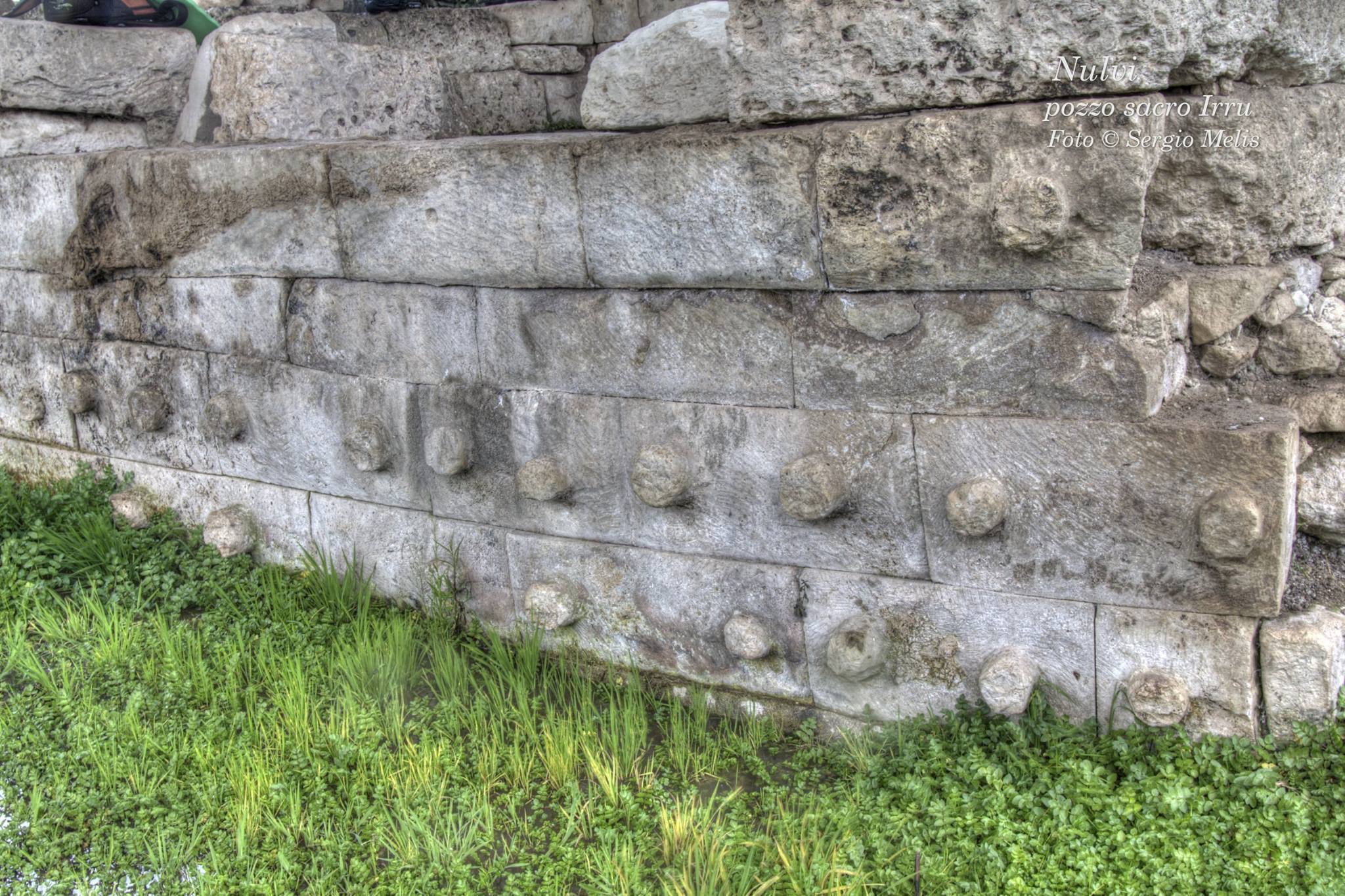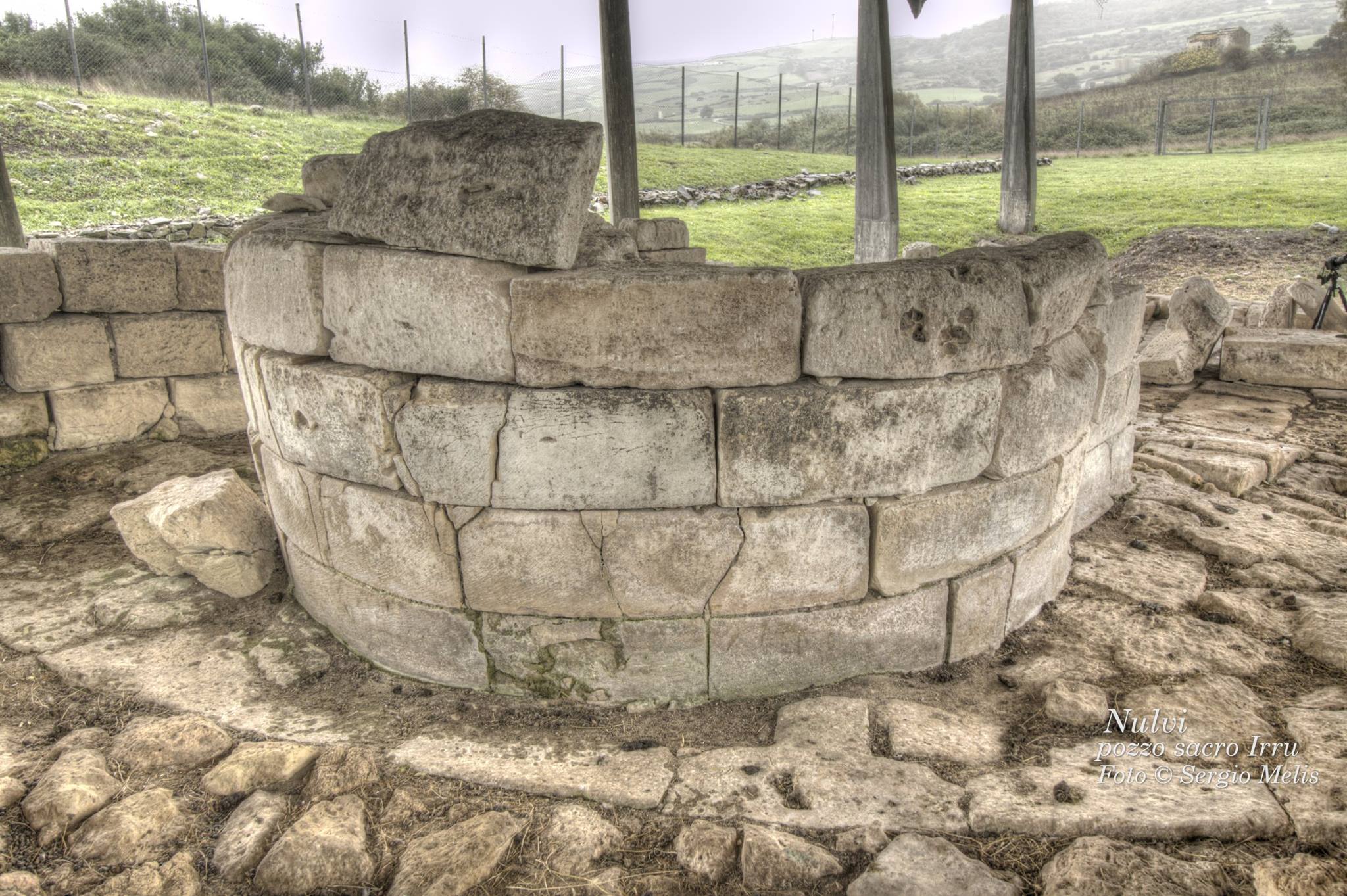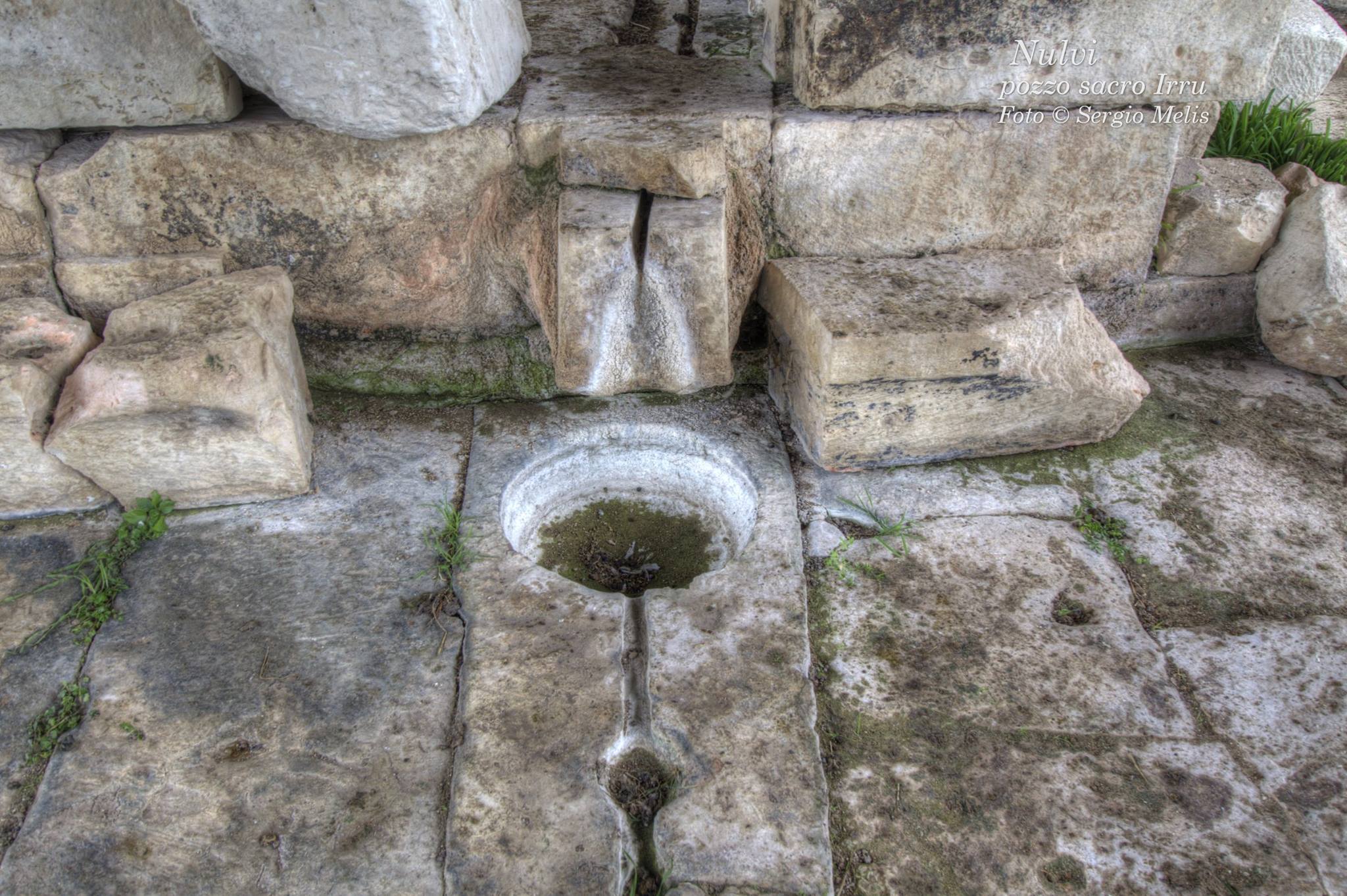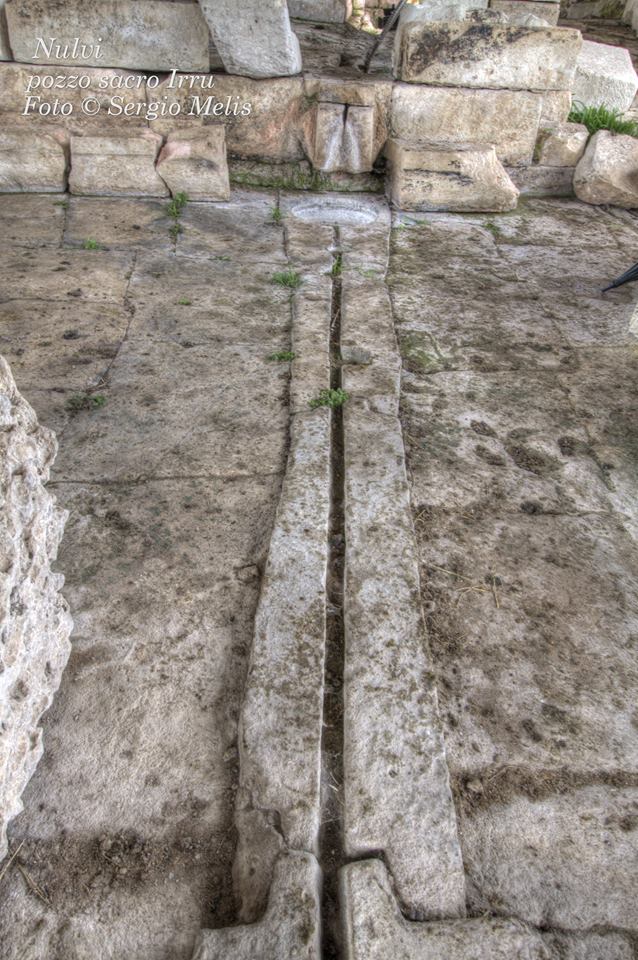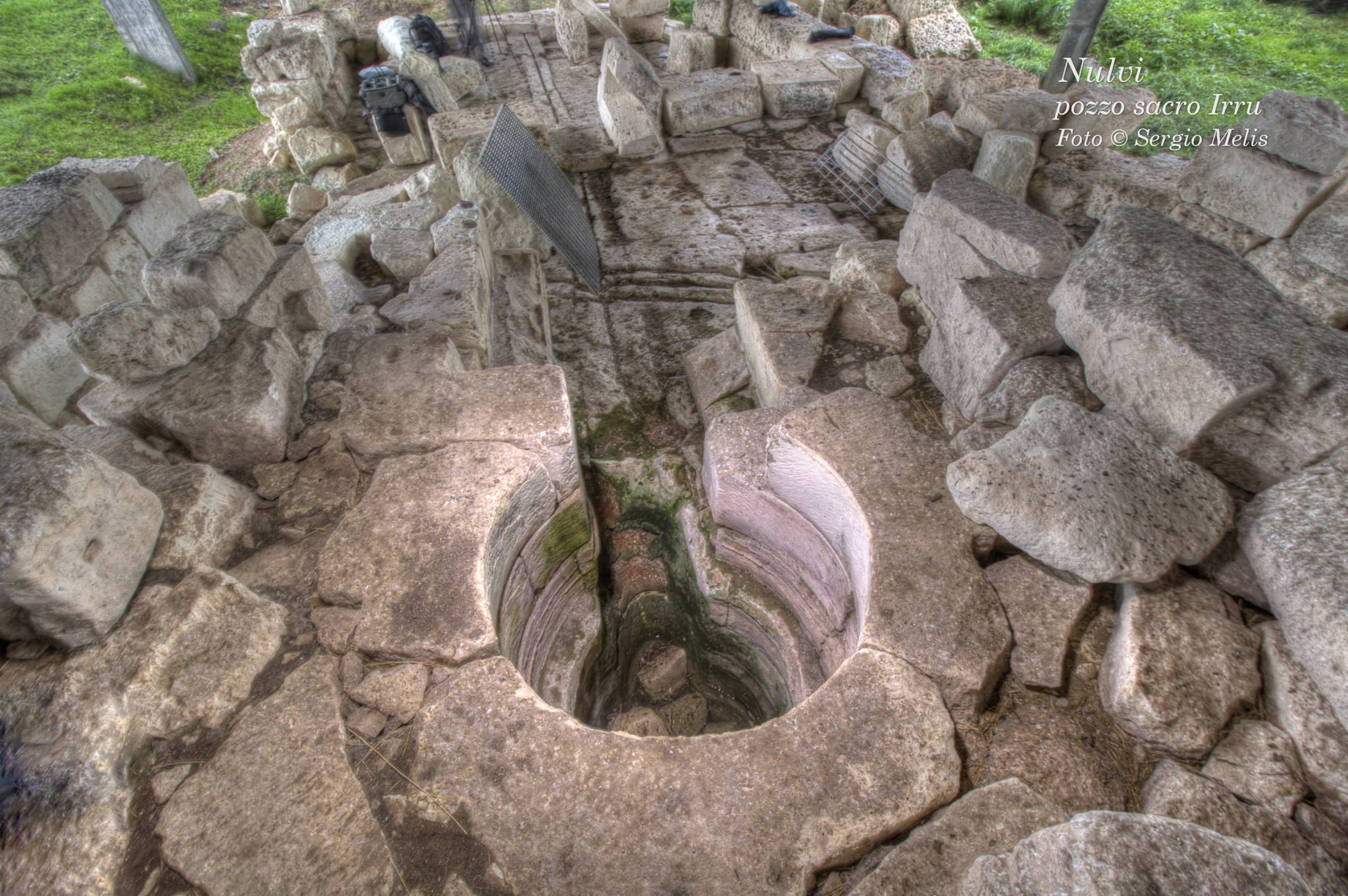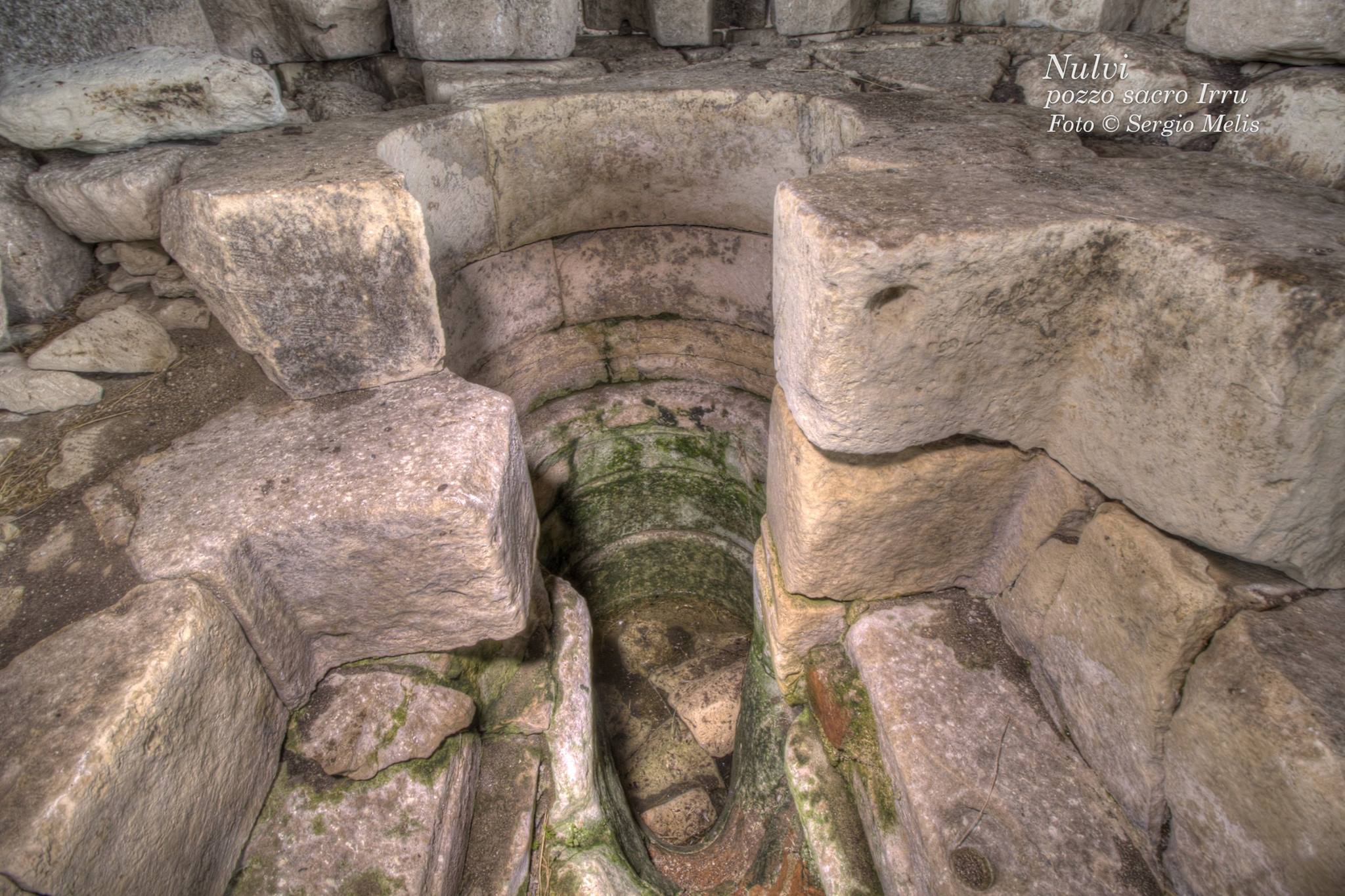“It is a sacred well of classical shape, although lacking a staircase, and devoid of the left wing of the atrium, which was cut off by machinery at the time of discovery. It rises about 2 m from the ground, and therefore lacks the covering system, the stones of which are scattered all around. The narrow atrium, characterized by the bench-seats, probably had a ‘gable’ covering/overstructure with two slopes, perhaps with a pinnacle, suggesting the presence of votive swords embedded, evidenced by a stone with a truncated pyramid shape. Throughout the monument and nearby, stones shaped like ‘T’ can be recognized, some with an external mammillary boss, in addition to various shaped blocks, according to various forms, including those with ram heads in high relief, others with wolf teeth, which probably adorned the junction area of the gable covering on the masonry of the lateral arms of the atrium…” (Descriptive passage about the sacred well of Irru in Nulvi, taken from the publication by Massimo Rassu “Pozzi sacri – Architetture preistoriche per il culto delle acque in Sardegna” – Ed. Condaghes 2016).
The images of the sacred well of Irru, in Nulvi, are by Sergio Melis.